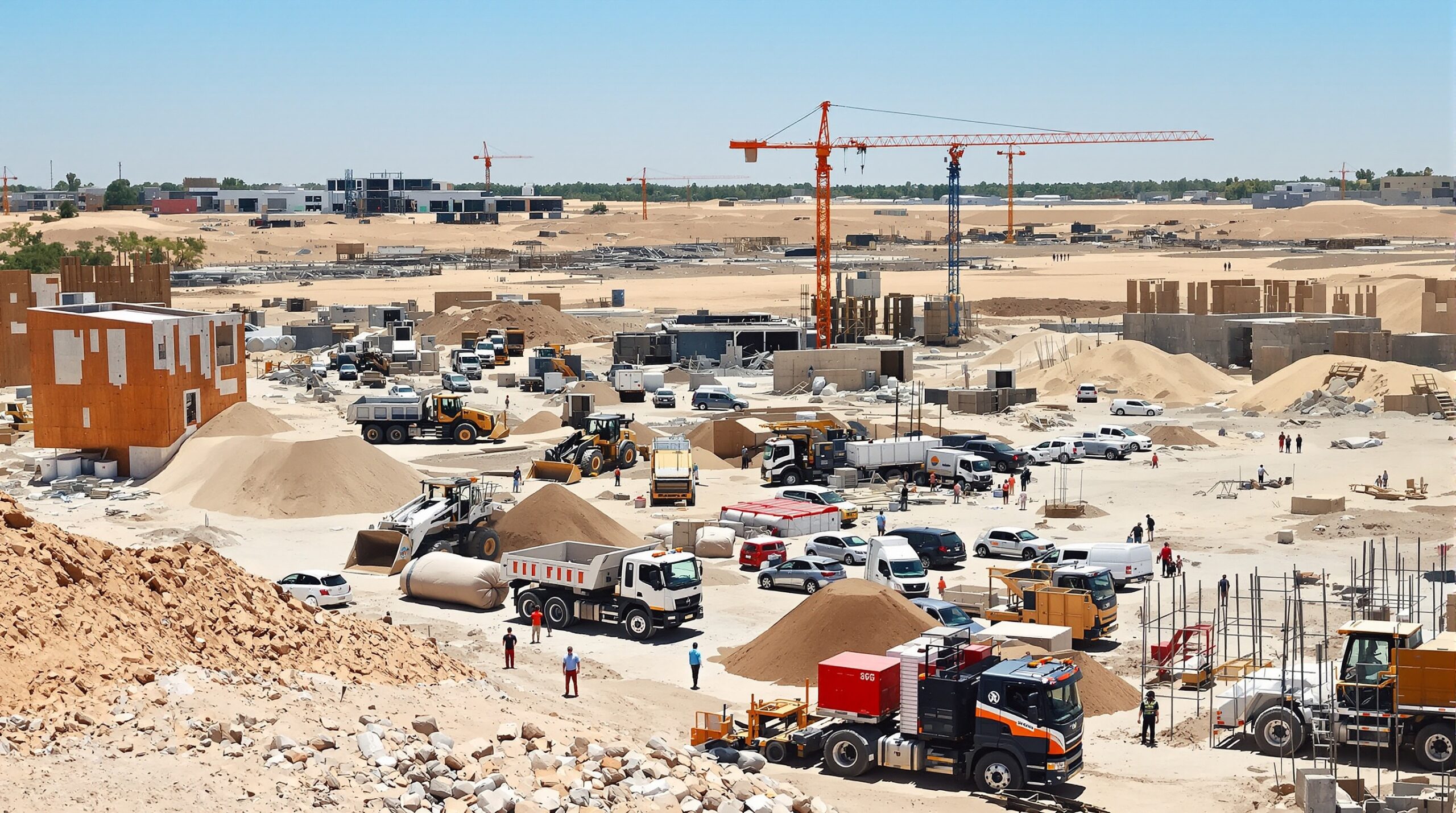Sand is a fundamental element of modern construction, shaping roads, bridges, skyscrapers, and entire cities. The world’s relentless demand for sand is creating a hidden crisis. An emerging sand shortage now threatens global infrastructure development and economic growth. Many people do not realize that sand, after water, is the most consumed natural resource on Earth.
Sand’s Critical Role in Construction
Sand is an essential ingredient in the production of concrete, asphalt, and glass. Nearly every modern building depends on it. Construction-grade sand provides the strength and cohesion required to form durable concrete and mortar. Not every type of sand is suitable, as desert sand grains are often too smooth and round. Riverbeds, lake beds, and coastal areas provide the rougher grains required by engineers. This difference makes construction sand a much scarcer resource than common knowledge suggests.
The Drivers Behind Growing Demand
Rapid urbanization fuels the global appetite for construction sand. Over half of the global population now lives in cities. Emerging economies in Asia and Africa are building infrastructure at unprecedented rates. According to the United Nations Environment Programme (UNEP), sand use worldwide has tripled over the past two decades. Construction booms in China, India, and Southeast Asia absorb hundreds of millions of tons each year. As populations expand, the pressure to build housing, highways, and public amenities only increases.
Environmental Consequences of Sand Extraction
Unregulated sand mining devastates river ecosystems and coastal habitats. Dredging rivers disrupts aquatic life, destroys fisheries, and erodes riverbanks. In Vietnam and Cambodia, excessive sand removal has caused the Mekong Riverbanks to collapse, threatening local communities. On beaches, mining for sand can accelerate coastal erosion, shrinking natural buffers against storms and rising sea levels. The destruction does not end with the landscapes alone. Wildlife loses habitats, water quality drops, and entire communities feel the long-lasting social impacts.
Global Scope of the Shortage
The looming sand shortage is not confined to one region. Countries worldwide feel the squeeze. Singapore, which imports vast quantities to expand its territory, has experienced bans and export controls from neighboring countries. India faces rampant illegal sand mining, sometimes controlled by organized crime groups. In the United States, suitable sand deposits for hydraulic fracturing (fracking) face increasing depletion. European cities must now weigh the costs and risks of continued sand imports. With constrained supplies, costs for construction materials have started to rise globally.
The Economics and Underground Market of Sand
As sand becomes scarce, it turns into a lucrative commodity, fueling a shadow market. Illegal sand mining has led to violence, corruption, and environmental crime worldwide. The so-called “sand mafias” has seized control of the trade in some countries. In India, journalists and activists who expose sand mining operations sometimes face intimidation or worse. The global regulatory response lags as sand moves across borders with limited tracking. The growing black market complicates efforts to control sustainable extraction and ensure fair distribution.
Potential Solutions and Innovations
To counter the sand crisis, construction industries and governments must rethink their approach. Recycling and reusing old concrete offers one practical solution. Advances in crushing technology allow engineers to reclaim usable sand from demolition debris. Some researchers develop alternatives using crushed rock or industrial byproducts such as fly ash. New construction techniques, such as 3D printing with tailor-made composite materials, could further reduce sand usage. Regulations that promote responsible mining and restoration of sand sources are essential. International cooperation is necessary to monitor cross-border sand flows and enforce sustainable trade practices.
Transitioning to a Sustainable Future
Building awareness is a vital first step in addressing the sand shortage. Policymakers and industry leaders must recognize sand’s finite nature. Clear regulations should protect rivers, beaches, and sensitive habitats from excessive and unsustainable mining. Public investment in research and innovation drives the search for alternatives. Collaborative international frameworks can support a transition toward more sustainable building practices. These measures can slow the damage and ensure that future growth does not deplete the Earth’s vital sand reserves.
Case Studies: Impact on Major Construction Projects
Sand shortages have already delayed or altered major projects. In India, infrastructure upgrades and homebuilding have slowed due to illegal mining crackdowns. Singapore faces challenges expanding its landmass as neighboring countries restrict sand exports to protect their environments. In Morocco and Indonesia, beach erosion resulting from sand mining threatens coastal tourism and urban development. Even in affluent markets like Dubai, the reliance on imported sand for construction illustrates the global nature of the shortage. Each case underlines the urgent need for responsible solutions and adaptive strategies.
The Role of Public Awareness and Policy
Media coverage and grassroots activism play powerful roles in highlighting the sand crisis. Policy frameworks that incentivize sustainable practices can drive innovation and reduce pressure on natural sand sources. Governments can support education campaigns and invest in alternative construction methods. Partnerships among industry, academia, and communities foster a collaborative path forward. Credible certification schemes and transparent supply chains will help builders and consumers make informed decisions. Every stakeholder has a part to play in moving towards a balanced approach.
Conclusion: Balancing Progress with Sustainability
The global sand shortage is no longer an invisible issue but a challenge that demands urgent attention. Construction and economic progress must align with environmental stewardship if societies hope to thrive. Rethinking how builders source and use sand will safeguard infrastructure and ecosystems alike. The combined efforts of governments, industries, and everyday citizens are crucial. Proactive policies, creative engineering, and cooperation offer hope for a sustainable solution to this quiet but essential resource crisis.

